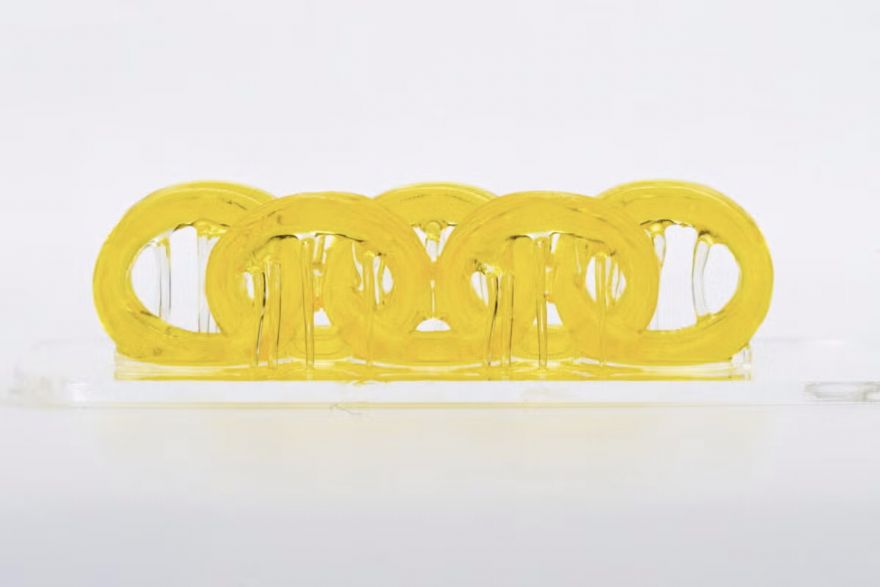
A paper published in
Nature Materials by researchers at the
Texas of (UT Texas) in Austin, reveals how researchers — inspired by how nature blends toughness and flexibility, such as the rigid structure of bone surrounded by pliable cartilage — developed a fast, precise new 3-D printing method that seamlessly merges soft and hard properties into a single object using different colours of light.
Zak Page, an assistant professor of chemistry at UT Austin and corresponding author, said: “What really motivated me and my research group is looking at materials in nature. Nature does this in an organic way, combining hard and soft materials without failure at the interface. We wanted to replicate that.”
A related paper, published 29 May in
ACS Central Science by Mr Page and other authors, describes ‘adjacent work’, which the journal’s editors said represents “the future of 3-D printing” and showcases “how light — not merely as a tool for curing resin, but as a finely tuned sculptor — can drive the next generation of AM.”
Keldy Mason, lead author of the latter study and a graduate student in Mr Page’s lab, said: “This approach could make AM more competitive for higher-volume production compared with traditional processes like injection moulding. Just as important, it opens up new design possibilities that give engineers, designers and makers more freedom to create. One of the biggest challenges in creating objects with vastly different physical properties is that materials tend to fail at the interface, or the point they come in contact — just like how the rubber sole of a running shoe will separate over time from the softer mesh cloth above it.”
The new 3-D printing method uses a custom-designed liquid resin and a dual-light 3-D printing system that activates different chemical reactions depending on the colour of light used. By shining violet light, the resin cures into a stretchy, rubber-like material. But in areas hit with higher-energy ultraviolet light, it becomes rigid and strong. The result is an object with distinct zones of softness and hardness crafted in a single 3-D print.
Mr Page added: “We built in a molecule with both reactive groups so our two solidification reactions could ‘talk to each other’ at the interface, so giving us a much stronger connection between the soft and hard parts — and there can be a gradual transition if we want. We demonstrated the system by 3-D printing a small but functional knee joint with flexible ligaments and rigid bones that move together smoothly; we also created a prototype stretchable electronic device with a gold wire mounted on a strip that could bend and stretch in parts, but with a more rigid section to prevent the circuit from breaking.”